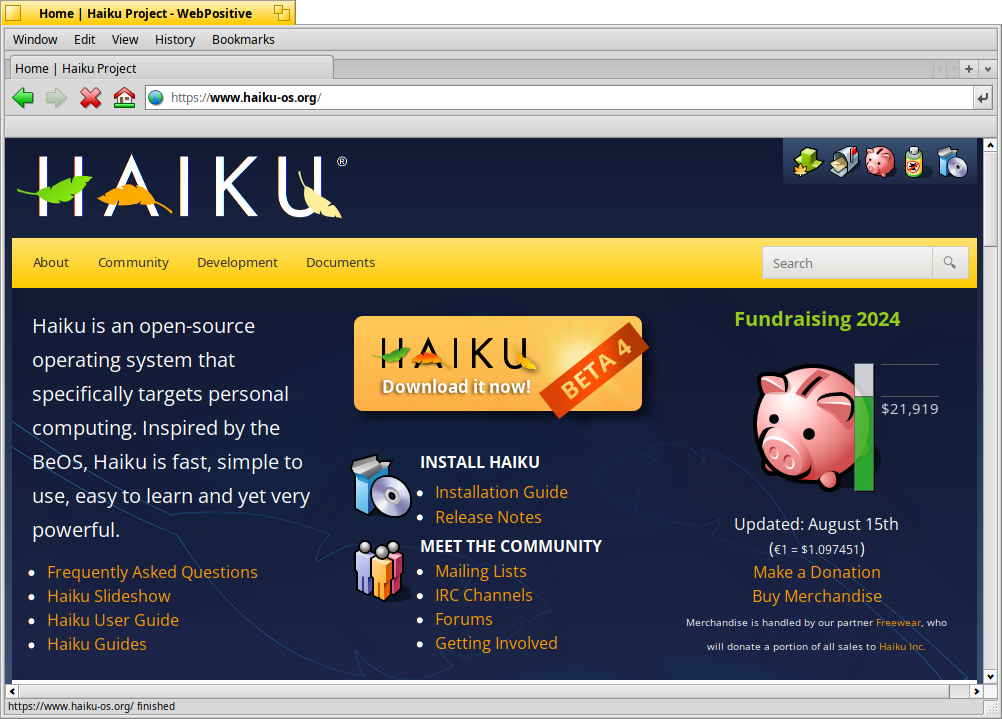This report covers hrev58487 through hrev58583.
This report covers hrev58369 through hrev58486.
This report covers hrev58292 through hrev58368.
This report covers hrev58188 through hrev58291.
This report covers hrev58043 through hrev58187.
We’re now back to development “as usual” after the release of R1/beta5 (though some of the changes in this report did make it in to the release itself.)
This report covers hrev57901 through hrev58042.
R1/beta5 was of course released just a few days ago, and many (though not all) of the changes in this report made it in to the release.
Introduction
The goal of this post is to document the changes I’ve successfully made during the GSoC period, the current state of the project, future enhancement goals, and a few other topics. I also want to extend my thanks to the Haiku developers and community for the opportunity to work on this fantastic operating system.
Background
Haiku is a truly innovative operating system. One of its most interesting approaches to a filesystem lies in the fact that it makes metadata a primary characteristic of the filesystem. In fact, this was one of the core features that it carried over from its predecessor BeOS.
Gerrit Submission.
Check out my final Pull Request here: 8141
Overview
During this GSoC period, I focused on developing the virtio sound driver for Haiku,
aiming to enhance its performance as a guest OS in virtualized environments.
This journey began with some challenges, for example, initially, I missed a small
detail in the driver module path, which prevented the driver from loading.
One of the significant setbacks, I had, was understanding hmulti_audio.
With little to no documentation available, it felt like working with a black box.
I had to dive into existing audio drivers to piece together how things worked, but
even then, some aspects remained hidden to me.
Project overview
QEMU is a virtual machine which allows running an operating system inside of another. While there already is a Haiku port, it currently does not support any acceleration system through native virtualization (through Intel VT-x and AMD SVM.) This makes it too slow for many uses.
This project aimed to bring hardware virtualization to Haiku by porting NVMM, a hypervisor that already has QEMU support, into Haiku from DragonFlyBSD. The project goals (as included on the proposal) were:
The goal of this document is to be an overview of everything I did during GSoC. It should be readable even if you haven’t read any of the previous blog posts and don’t know much about Haiku or WebKit (I hope I succeeded!).
First, some background. Haiku’s native browser is WebPositive.

WebPositive’s code mostly deals with the user interface. It uses our fork of WebKit, HaikuWebKit, to actually render the web pages, run JavaScript, process input, and so on. WebKit (and, by extension, HaikuWebKit) provides two API versions: WebKitLegacy, and WebKit (aka WebKit2). Unfortunately, we are still stuck using WebKitLegacy even though WebKit2 has been out for more than a decade.





